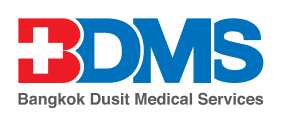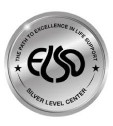


Background: Acute respiratory distress syndrome (ARDS) is an undesirable outcome of severe coronavirus disease 2019 (COVID-19). Although venovenous extracorporeal membrane oxygenation (VV-ECMO) has been widely accepted as a rescue therapy for severe ARDS, its use in COVID-19-associated ARDS is still debated.
Objective: To compare the clinical outcomes of COVID-19 patients treated with VV-ECMO or conventional ventilator support.
Materials and Methods: The authors conducted a retrospective study in Bangkok Heart Hospital, Thailand, between March and September 2021.Patients were divided into ECMO and non-ECMO or conventional ventilator support groups. The primary outcome was in-hospital mortality, and the secondary outcomes were complications, length of ICU stay, recovery time after extubation, and total length of hospital stay.
Results:Of the 3,053 COVID-19 patients, 36 (1.18%) developed severe ARDS, which 12 were treated with VV-ECMO and 24 with a conventional ventilator. In-hospital mortality was non-significantly lower in the ECMO group at 58.3% versus 83.3% (p=0.126). Upper gastrointestinal bleeding was non-significantly more common in the ECMO group at 41.7% versus 25.0% (p=0.306) but there were no cases of deep vein thrombosis in the ECMO group at 0% versus 20.8% (p=0.088). There were no significant differences in any other complications. Six patients, including four in the ECMO group and two in the non-ECMO group underwent cytokine removal via HA330 hemoperfusion, but interleukin-6 did not decrease in these patients.
Conclusion:VV-ECMO in COVID-19-associated ARDS patients did not significantly decreased mortality compared to conventional ventilator therapy. A multidisciplinary team should develop an optimal treatment plan for each COVID-19-associated ARDS patient.
Keywords:SARS-CoV-2; Intensive care unit, Artificial respiration Received 12 September 2022 | Revised 14 November 2022 | Accepted 2 December 2022

Permyos Ruengsakulrach
,MD, PhD,FRCST, FCCP, AFEEAT
Cardiovascular and Thoracic Surgeon and Medical Administrative Assistant, Bangkok Heart Hospital Bangkok, Thailand.
Abstract Extracorporeal Membrane Oxygenation (ECMO) is a life-saving intervention for patients with severe cardiopulmonary failure, providing critical support when conventional therapies are inadequate. This review aims to offer a concise, comprehensive overview of ECMO, covering its theoretical foundations, clinical applications, and recent advancements. Designed as a practical resource for medical professionals involved in ECMO care, this review also serves as a guide for those interested in exploring ECMO’s role in managing respiratory and heart failure, including post-ECMO care. The review discusses the physiological mechanisms of ECMO, key clinical indications, patient selection criteria, and its evolving role in modern critical care. Common ECMO-related complications, such as thrombosis, bleeding, and mechanical failure, are highlighted, along with strategies for management and troubleshooting. Ethical considerations, including resource allocation and end-of-life decisions, are explored, as well as the psychosocial impacts on patients and their families. This review also contextualizes ECMO within current clinical practices, identifying global disparities in access to ECMO services. Looking ahead, it discusses the future of ECMO, including technological innovations and the potential for personalized treatments. By bridging theoretical principles with practical applications, this article aims to enhance understanding of ECMO’s pivotal role in saving lives and improving patient outcomes
Keywords extracorporeal membrane oxygenation, ECMO, severe cardiopulmonary failure, cardiogenic shock
A. Physiology of ECMO ECMO operates by diverting blood from the patient’s circulatory system, oxygenating it extracorporeally, and removing carbon dioxide before reinfusing it into circulation (Figure 1). This procedure alleviates strain on the patient’s heart and lungs, allowing these organs to recover from conditions such as acute respiratory distress syndrome (ARDS), cardiogenic shock, or cardiac arrest.5 There are two main ECMO modalities: